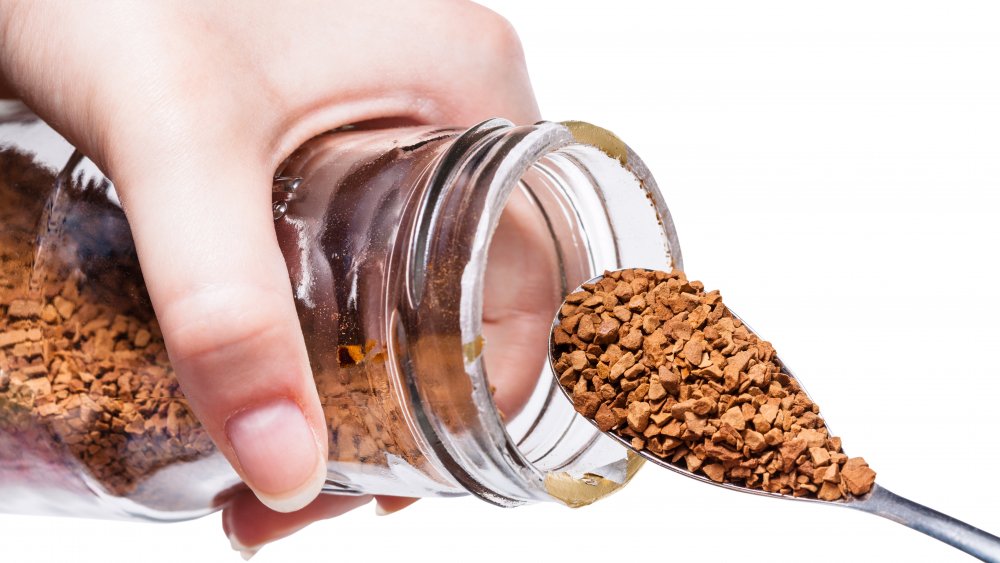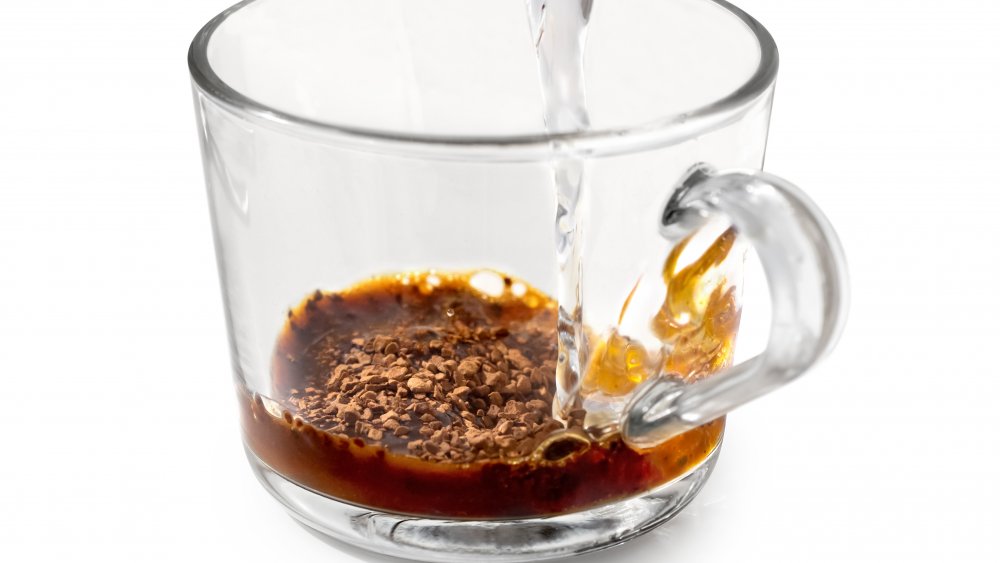Things You Never Knew About Instant Coffee
If you've recently dug out that jar of instant coffee at the back of your pantry, you might be surprised to learn exactly what goes into making those dry coffee crystals. The only ingredient in instant coffee is coffee, so how do they turn it into those strange granules? The answer is one of two ways; either the coffee is sprayed into super-heated air, causing all of the water to evaporate; or it's freeze-dried to create the dehydrated coffee crystals (via Business Insider).
Once you add water, the resulting coffee might look like the real stuff, but there are a few clear-cut differences. For one thing, you get less caffeine in one cup of instant (between 30 and 90 milligrams) compared to one cup of regular coffee (between 70 and 140 milligrams), according to Healthline. Additionally, instant coffee has more acrylamide, which is a chemical that has been named a possible carcinogen (via Livestrong). While acrylamide is formed naturally during the coffee roasting process, more is made during the drying or freeze-drying process — though it's still believed to be at levels safe to drink.
How instant coffee became so popular
While the first instance of an instant coffee-type product dates back to England 1771, the modern version wasn't introduced to the American market until 139 years later (via Mental Floss). In 1910, an immigrant inventor named George Washington introduced the first mass-produced instant coffee called, quite punnily, "Red E Coffee" (via NPR). Its popularity exploded during World War One, not just because it was marketed as "perfectly digestible," but because of its convenience. The powder could be packaged in envelopes and mixed into hot water for soldiers on the front lines, and by 1918 the US government was trying to buy 37,000 pounds of it a day to meet demand.
Today, you might reserve instant coffee for camping, trying TikTok trends, or mornings you're running especially late, but about half of the world's population prefers it to fresh, according to The Washington Post. These numbers are mostly made up of countries where there is no strong coffee drinking tradition, like China, Russia, and Australia (where instant coffee makes up over 75 percent of coffee sold!).

